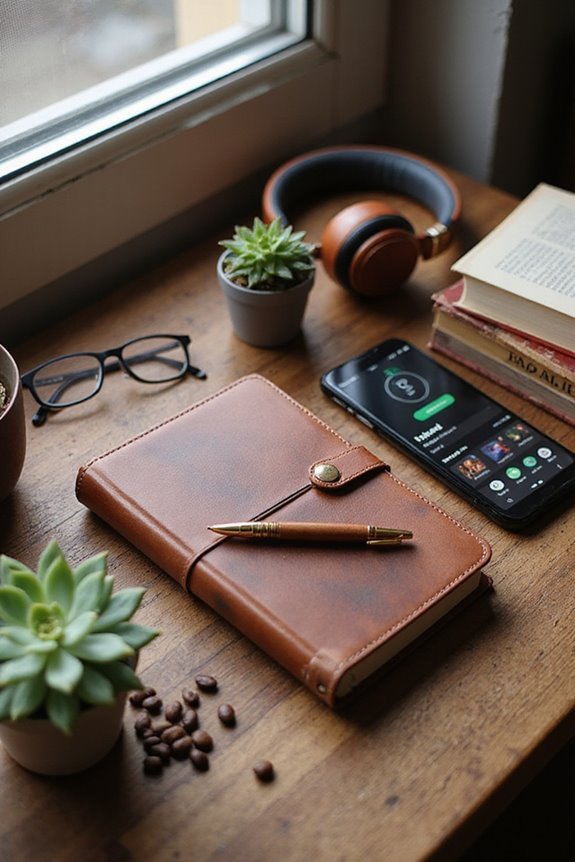Setting parental controls on digital music platforms is easier than you might think! For Spotify, we can limit explicit content with the Premium Family Plan. Apple Music lets us use Screen Time to block explicit tracks through Family settings. In Amazon Music, we toggle on “Block Explicit Songs” in preferences, but keep in mind it doesn’t filter podcasts. YouTube Music requires using Google Family Link to create supervised accounts. There’s more to explore, so let’s keep going!
Key Takeaways
- For Spotify, use the Premium Family Plan to limit explicit content and create individual profiles for each family member.
- Apple Music utilizes Screen Time for settings; adjust content restrictions under your child’s profile in the Settings app.
- On Amazon Music, enable “Block Explicit Songs” in Music Preferences through the app’s settings menu, impacting all devices on the account.
- YouTube Music employs Google Family Link to set up supervised accounts and offers content filters to block explicit material.
- Combine technology with communication; discuss music content and listen together for effective monitoring and understanding.
Spotify Parental Controls: Options and Limitations
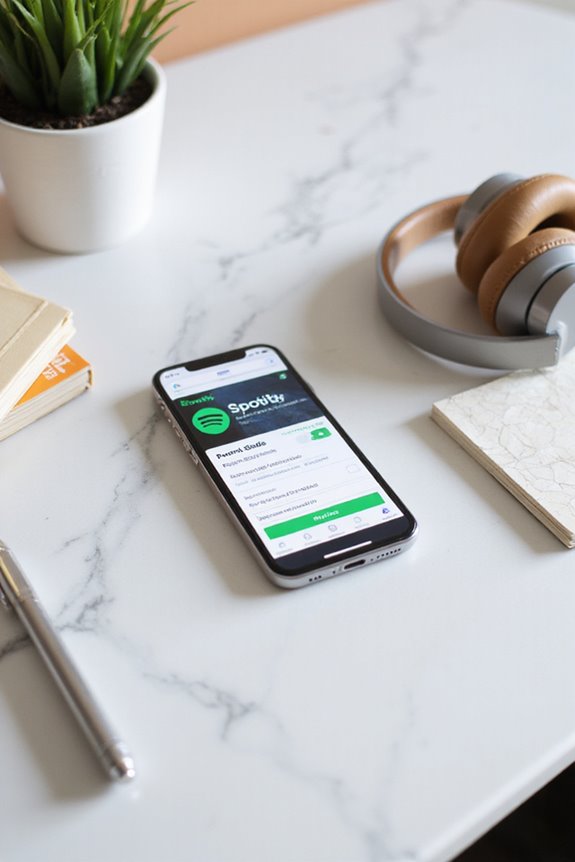
When it comes to setting up parental controls on Spotify, we’ve got some pretty straightforward options that can make our lives easier as parents. With the Spotify Premium Family Plan, we can limit explicit content and tailor our kids’ listening experiences. It costs about $16.99 a month for up to six accounts, and each child gets their own profile. However, it’s important to note the Spotify limitations—like how the controls primarily focus on blocking explicit content without finer filters. Plus, kids over 13 have less strict restrictions. By sharing playlists, we can engage our teens too! So, let’s explore, navigate the Spotify features, and create a safe, fun listening environment for the whole family!
Apple Music: Utilizing Screen Time for Content Control
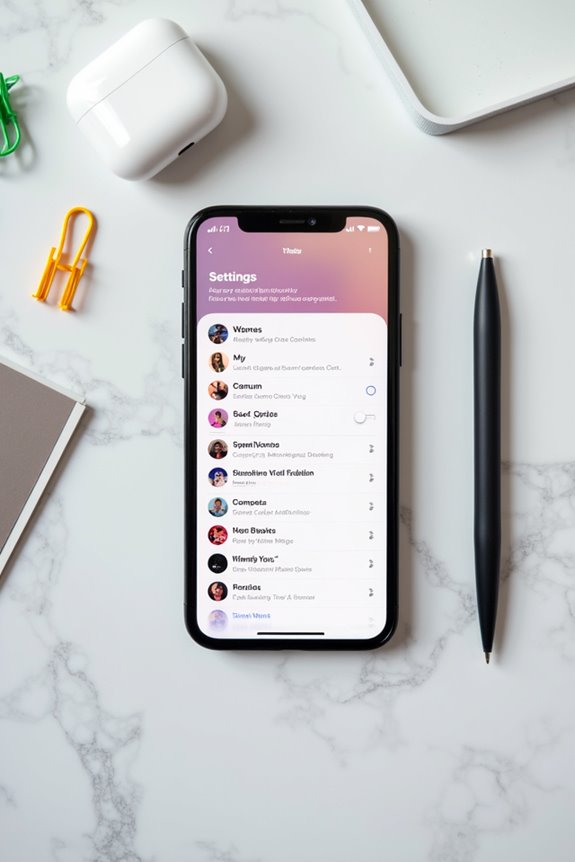
If Spotify’s parental controls have given us a good start on managing our kids’ music habits, Apple Music takes it a step further with the Screen Time feature. First, we can access the Settings app, tap on Screen Time, and select our child’s name under Family. After enabling Content & Privacy Restrictions, we can set content restrictions to block explicit music playback by choosing “Clean” settings. It’s also smart to guarantee all devices are updated. With Family Sharing, we can adjust music ratings remotely without needing the child’s device. Remember, we can use Downtime to limit playtime, making it easier to manage when Apple Music is accessible. Consistency is key, so let’s keep monitoring those settings!
Amazon Music: Setting Filters and Understanding Limitations
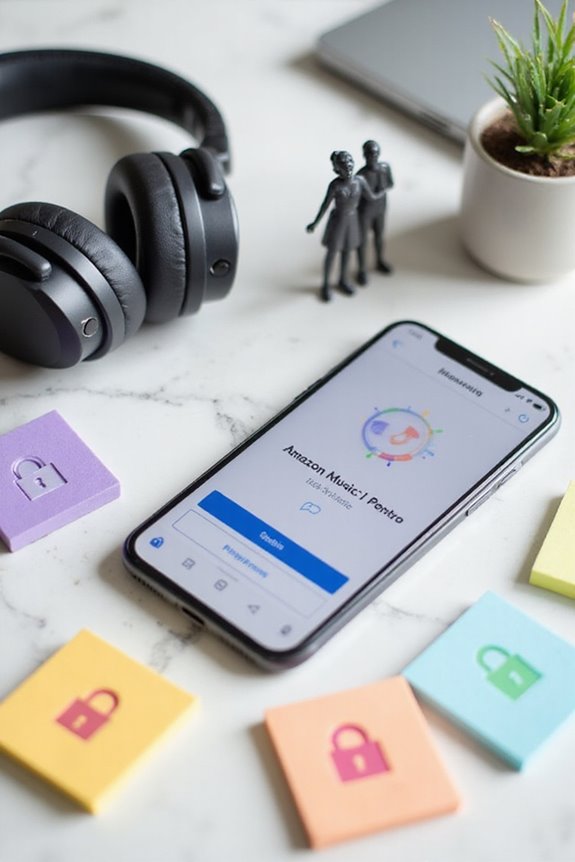
Setting up parental controls on Amazon Music can feel like a challenging task, but with a few straightforward steps, we can help keep our kids’ listening habits in check. First, we open the Amazon Music app and access Settings via the gear icon. Then, in the Music Preferences section, we toggle on “Block Explicit Songs.” Remember, this filter effectiveness applies to all devices on our account, so it’s a family-wide effort. However, let’s be aware that this doesn’t cover podcasts or videos, and some suggestive content might slip through without explicit lyrics. For a complete protective approach, we should consider device-level parental controls and educate our family about how to stay safe in the vast world of music.
YouTube Music: Google Family Link and Supervised Accounts
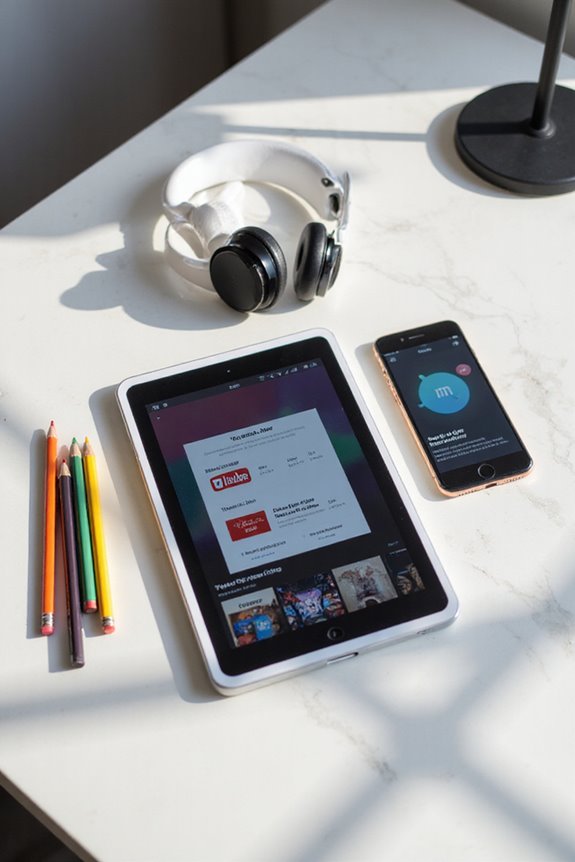
With music streaming becoming an everyday part of our lives, keeping track of what our kids are listening to is more important than ever. To set up YouTube Music for our children, we can use Google Family Link and create supervised accounts. It’s a straightforward process: we just sign into our account, select our child’s profile under Parental Settings, and grant access to YouTube Music. The app features content filters that let us choose settings like “Explore” or “Explore More,” filtering out explicit songs and videos effectively. Plus, we can disable autoplay to avoid unwanted loops and keep their playlists private. This setup allows us to maintain control while giving our kids a safe space to explore music.
Best Practices for Parental Monitoring on Music Platforms
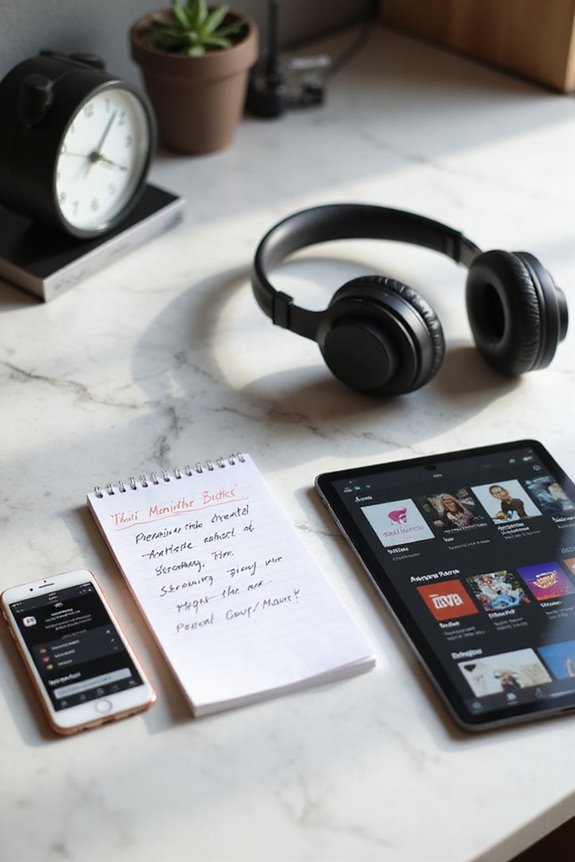
As we immerse ourselves in the world of parental monitoring on music platforms, it’s essential to remember that technology can only do so much. While explicit content filters on platforms like Spotify and Amazon Music help, they’re not foolproof. To enhance our music content awareness, we should engage in conversations with our kids about explicit content education—what those labels really mean. Monitoring can be as simple as listening to music together during family time, which adds oversight. Additionally, using song-identification tools can help us screen unfamiliar tracks before they enter our kids’ playlists. Combining these techniques with tech solutions creates a thorough approach toward safe music enjoyment, making it easier to guide our children through the digital soundscape they love.
Frequently Asked Questions
Can I Use Parental Controls on Free Music Streaming Subscriptions?
As we navigate the vast ocean of free platforms, we often encounter music limitations. While parental controls are minimal, we can still be vigilant, steering our children’s choices toward safer shores together.
How Can I Monitor My Child’s Music Listening Habits Effectively?
To monitor our child’s music listening habits effectively, we should review their listening patterns via app usage. We can discuss content together, fostering understanding while using tools to track their engagement with music and podcasts.
Are There Children-Specific Music Platforms Besides Spotify Kids?
When it comes to kid-friendly platforms, we’ve got our work cut out for us! Besides Spotify Kids, there are great music apps like Amazon Kids+, iHeartRadio Family, and Pandora Kids to guarantee safe listening.
What Age-Related Content Restrictions Exist for Music Apps?
When considering age-related content restrictions, we should look at music rating systems that help us filter explicit content. Implementing appropriate age restrictions guarantees our kids enjoy music safely and suits their developmental stage.
Is There a Way to Block Specific Artists or Songs on Music Platforms?
Oh, if only we could wave a magic wand for artist blocking and song filtering! Unfortunately, we can’t fully block artists or songs on most platforms. We’ve got to be creative with what’s available!

